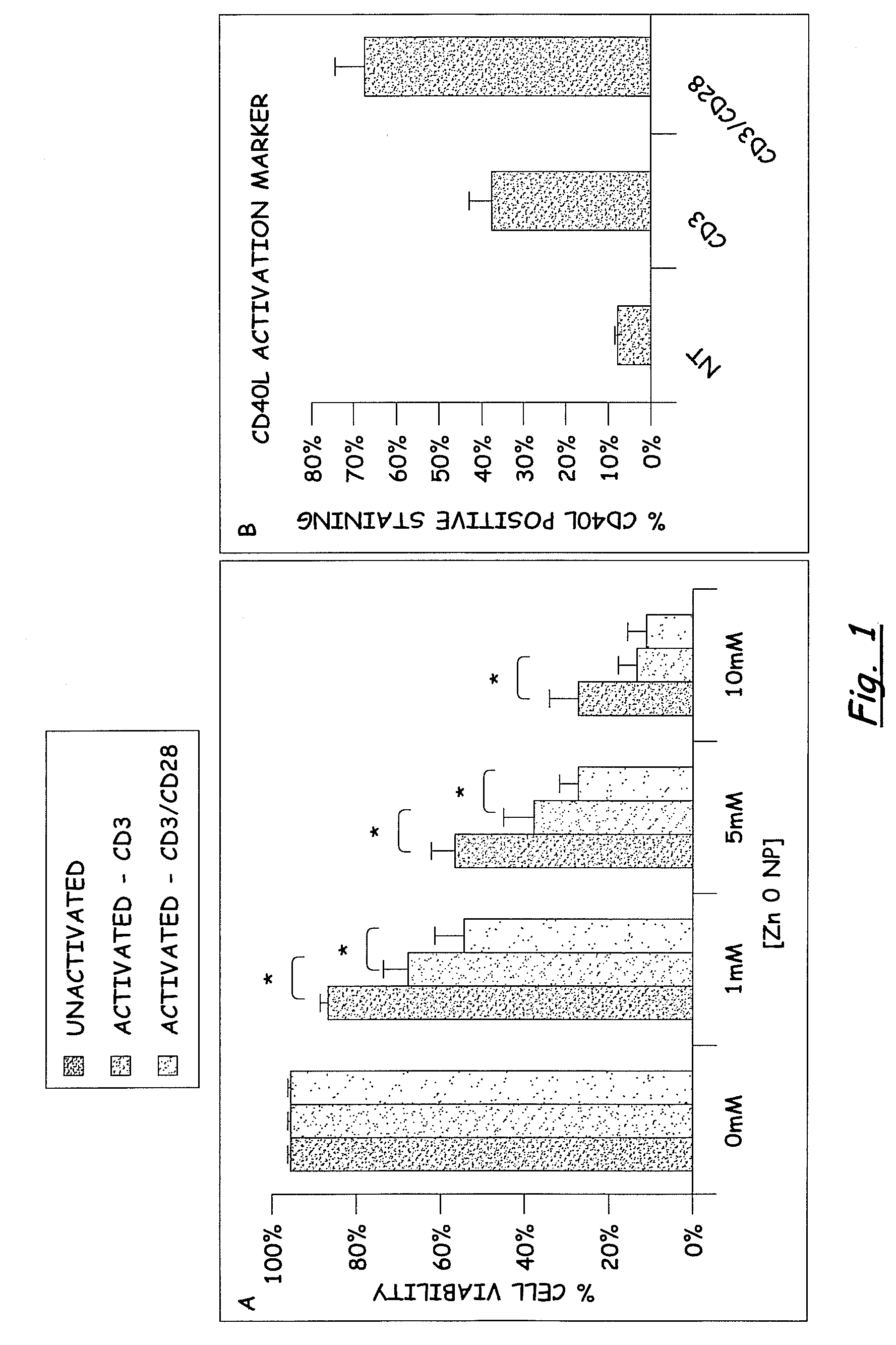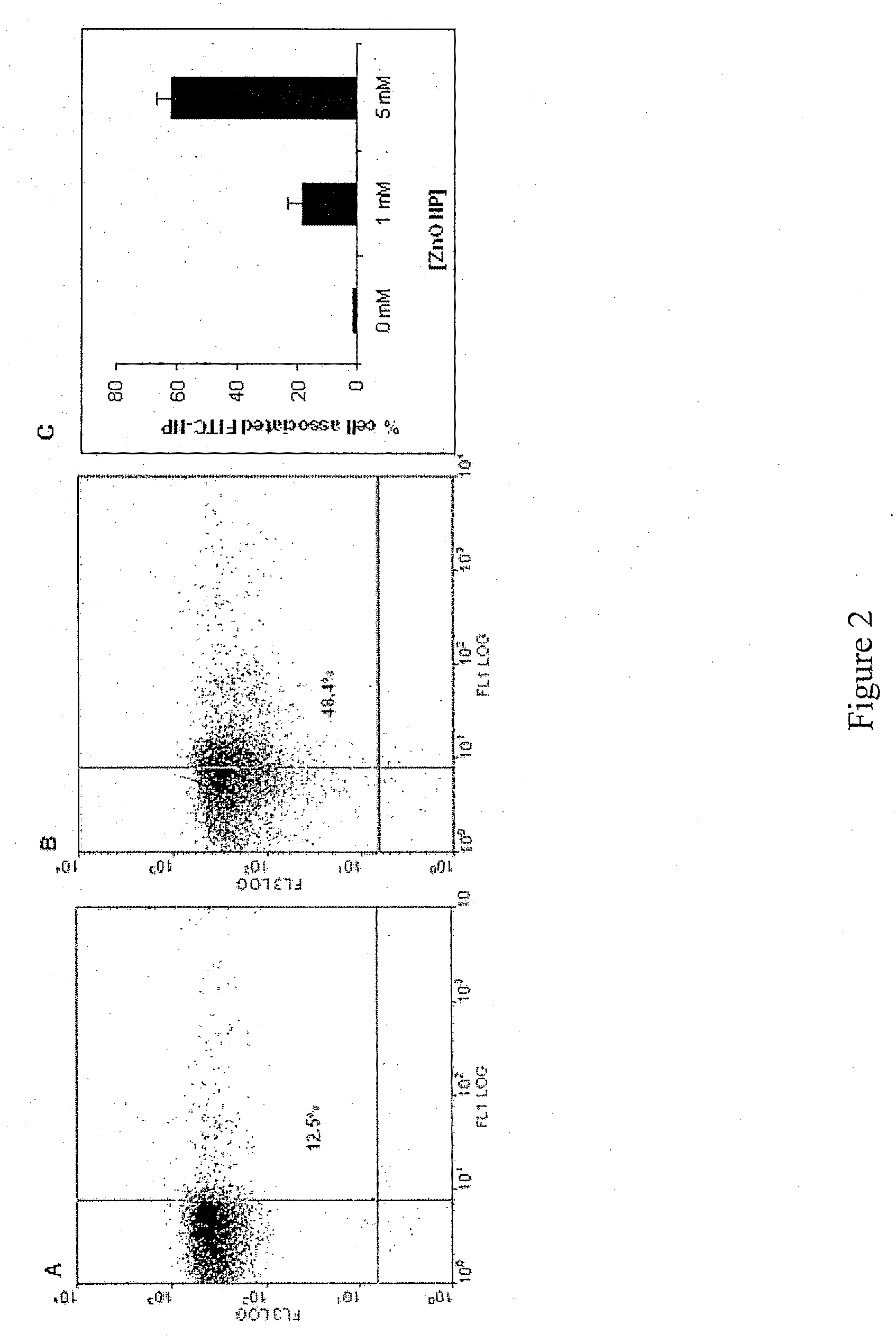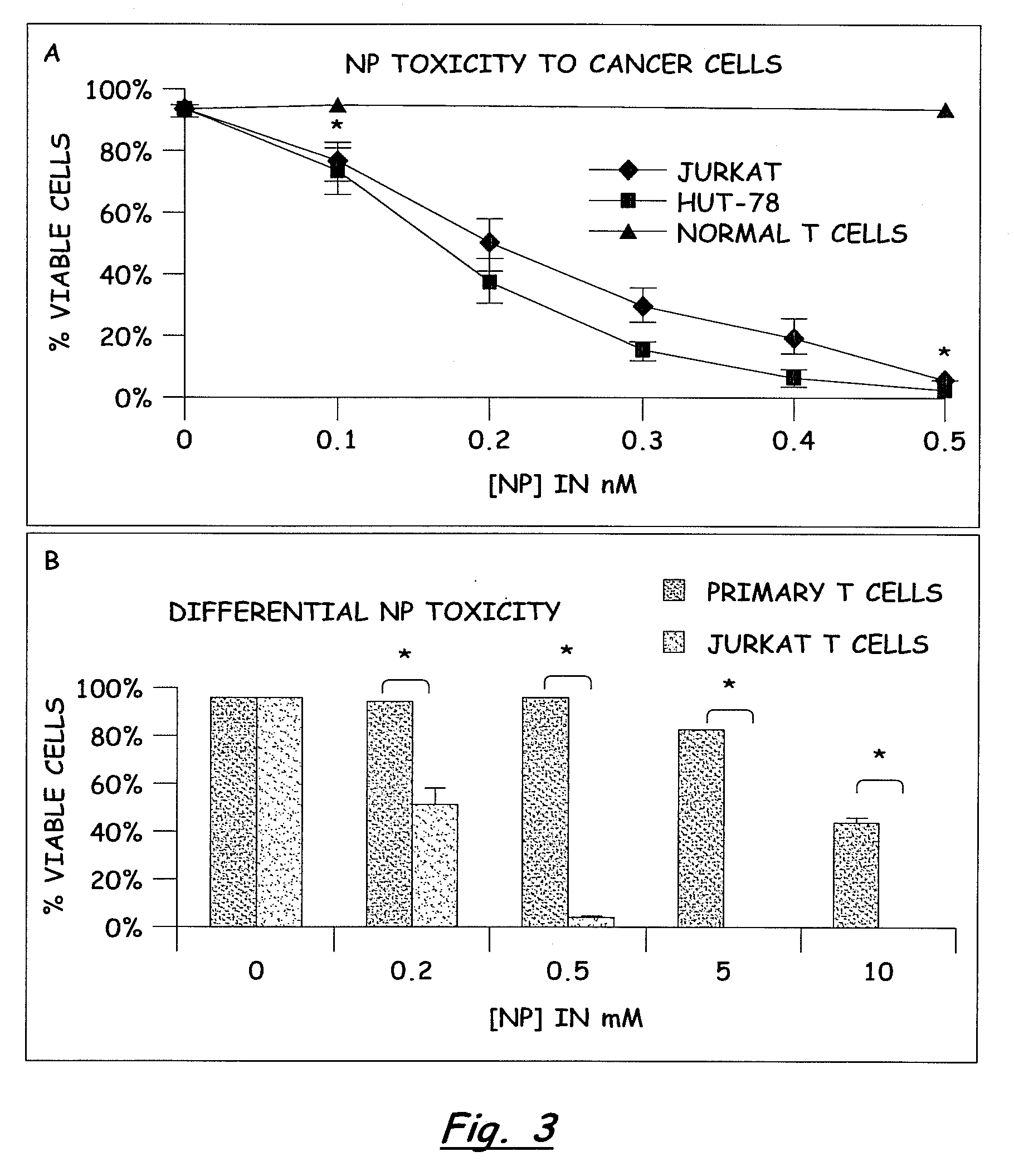PREFERENTIAL KILLING OF CANCER CELLS AND ACTIVATED HUMAN T CELLS USING ZnO NANOPARTICLES
a technology of nanoparticles, which is applied in the field of preferential killing of cancer cells and activated human t cells with zinc oxide nanoparticles, can solve the problems of systemic toxicities, debilitating adverse effects in normal body tissues, and inability to effectively differentiate between cancerous and normal cells in the current anticancer regime, etc., and achieves greater toxicity, strong preferential ability to kill, and utility
- Summary
- Abstract
- Description
- Claims
- Application Information
AI Technical Summary
Benefits of technology
Problems solved by technology
Method used
Image
Examples
Embodiment Construction
Materials and Methods
1. Preparation and Characterization of Zinc Oxide Nanoparticles
[0018]ZnO nanoparticles were synthesized in diethylene glycol (DEG) by forced hydrolysis of zinc acetate at 160° C. as previously described and size control achieved by optimizing the hydrolysis ratio. The ZnO NPs were separated from DEG via centrifugation (15,000 rpm), washed with ethanol several times and dried to obtain a nanoscale powder sample. The ZnO chemical phase, crystallite size (8-13 nm) and shape were confirmed using x-ray diffraction (XRD), transmission electron microscopy (TEM) and spectrophotometry. The nanoparticles were then reconstituted in phosphate buffered saline (PBS) solution. After reconstitution, NPs were sonicated for 10 min and immediately vortexed before addition to cell cultures.
[0019]In order to aid in the investigations, additional FITC encapsulated ZnO (FITC-ZnO) particles were synthesized by forced hydrolysis and condensation of FITC-binding silane and silicate to ob...
PUM
| Property | Measurement | Unit |
|---|---|---|
| size | aaaaa | aaaaa |
| size | aaaaa | aaaaa |
| crystallite size | aaaaa | aaaaa |
Abstract
Description
Claims
Application Information
 Login to View More
Login to View More - R&D
- Intellectual Property
- Life Sciences
- Materials
- Tech Scout
- Unparalleled Data Quality
- Higher Quality Content
- 60% Fewer Hallucinations
Browse by: Latest US Patents, China's latest patents, Technical Efficacy Thesaurus, Application Domain, Technology Topic, Popular Technical Reports.
© 2025 PatSnap. All rights reserved.Legal|Privacy policy|Modern Slavery Act Transparency Statement|Sitemap|About US| Contact US: help@patsnap.com



